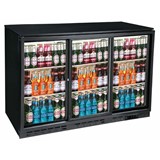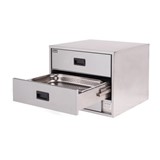Key Takeaways
- Choose loyalty programs that align with your venue’s customer behaviour and brand identity, personalised rewards and digital engagement are increasingly critical.
- Leverage data-driven loyalty platforms to enhance customer insights, optimise promotions, and drive repeat visits.
- Integrate omnichannel loyalty programs that combine in-person and online engagement, reflecting growing digital adoption in Australia.
- Ensure compliance with Australian privacy laws and consumer protection regulations such as the Privacy Act 1988 when collecting and using customer data.
- Consider cost-effectiveness and ease of implementation, tiered programs, app-based rewards, and coalition partnerships offer flexible options for different venue sizes.
- Monitor and adapt to emerging trends like gamification, social media integration, and sustainability-focused rewards to maintain customer interest.
- Real-world examples like the Australian pub chain Young Henrys demonstrate the power of community-focused loyalty programs to boost brand loyalty
- Venues with regular customers, like pubs, cafes, live music spots, and boutique restaurants, benefit most from loyalty programs that boost repeat visits, increase spend, and build strong customer connections.
Introduction: Why loyalty programs matter for venues in Australia in 2025
In an increasingly competitive hospitality landscape, venues across Australia, from pubs and clubs to cafes and live music spots, are constantly seeking ways to attract and retain customers. The rise of digital engagement, shifting consumer expectations, and the ongoing impacts of economic uncertainty mean that simply offering great food and service isn’t enough anymore. Loyalty programs have become a crucial strategy to encourage repeat visits, increase spend, and build emotional connections with customers.
By 2025, loyalty programs are no longer just “nice-to-have” perks but essential tools that harness technology, data, and behavioural science. However, not all loyalty programs are created equal, and Australian venues face unique challenges including compliance with privacy laws, catering to diverse consumer demographics, and balancing cost with impact.
This article explores the best types of loyalty programs for Australian venues in 2025, helping you make informed decisions that drive sustainable growth and stronger customer relationships.
Understanding your audience and venue goals
Knowing your customers’ preferences and habits
The first step in choosing or designing a loyalty program is to deeply understand your customer base. Australian venue-goers are increasingly tech-savvy and expect seamless digital experiences but still value authentic local connections. For example, Millennials and Gen Z customers often favour mobile app-based programs with instant rewards, while older demographics may prefer traditional punch cards or email-based offers.
Key points to consider:
- Demographic profile: Age, income, lifestyle, and tech adoption
- Visiting patterns: Frequency, peak times, and spend behaviour
- Preferred rewards: Discounts, exclusive access, freebies, or experiential offers
Defining your loyalty program goals
Your loyalty program should align with your business goals. Common goals for Australian venues include:
- Increasing visit frequency during off-peak times
- Boosting average transaction value
- Building brand advocacy and word-of-mouth
- Collecting data for personalised marketing
For example, a live music venue in Melbourne might prioritise driving attendance on weeknights through rewards for early bookings, while a coastal café in Byron Bay could focus on fostering community with sustainability-focused perks.
Types of loyalty programs suited to australian venues
Points-based programs
The most common and straightforward type, points-based programs reward customers based on their spending or visits. Points can be redeemed for discounts, free items, or experiences.
Pros:
- Easy to understand and implement
- Flexible redemption options
- Encourages repeat visits and higher spend
Cons:
- Can be perceived as generic if not personalised
- Requires a system to track points reliably
Australian example: The “TGI Fridays” venues use a points system integrated with their app to reward diners with points convertible into food and beverage discounts.
Tiered loyalty programs
Tiered programs reward customers progressively, encouraging them to reach higher levels with better rewards.
Pros:
- Motivates customers to increase visits or spend to reach next tier
- Creates a sense of exclusivity and achievement
Cons:
- More complex to manage and communicate
- May discourage casual customers if tiers feel out of reach
Australian application: Young Henrys, the Sydney craft brewery and pub, runs a tiered membership club where higher tiers get early access to limited-release beers and event invitations, fostering a strong community feel.
Coalition and partnership programs
These programs involve multiple businesses pooling resources to offer shared loyalty rewards.
Pros:
- Expands reward options and customer reach
- Reduces individual program costs
- Builds cross-promotional opportunities
Cons:
- Requires strong coordination and trust between partners
- May dilute brand-specific loyalty
Example in Australia: The “Everyday Rewards” program by Woolworths partners with several hospitality venues, allowing customers to earn and redeem points across grocery shopping and dining.
App-based digital loyalty programs
With mobile adoption in Australia hitting over 90%, app-based programs are now mainstream.
Pros:
- Real-time engagement and personalised offers
- Data collection for targeted marketing
- Convenient for customers and venues
Cons:
- Initial development or subscription cost
- Risk of app fatigue among consumers
Real-world case: The “Café Loyalty” app, popular with many Australian cafes and restaurants, allows venues to build branded loyalty experiences with QR code check-ins and instant rewards.
Experiential and gamified loyalty programs
These leverage game mechanics and exclusive experiences instead of or alongside discounts.
Pros:
- Enhances emotional engagement
- Differentiates the venue’s loyalty offering
- Appeals to younger demographics
Cons:
- Requires creativity and ongoing content
- More resource-intensive
Example: A live music venue in Brisbane offers “backstage passes” as a tier reward, combined with interactive challenges like trivia quizzes via social media.
Which types of venues benefit most from loyalty programs in Australia?
Not all venues will see the same impact from loyalty programs, so it’s important to understand where these initiatives deliver the greatest value. In Australia’s diverse hospitality and entertainment landscape, some venue types naturally gain more from well-designed loyalty schemes due to customer behaviour, frequency of visits, and competitive pressures.
Pubs and bars
Pubs and bars rely heavily on repeat local clientele and often face stiff competition. Loyalty programs here can:
- Encourage frequent visits through rewards on drinks or food
- Drive spend on slower nights with targeted promotions
- Build community loyalty, especially in suburban or regional areas where customer retention is key
For example, many Australian pubs incorporate tiered programs offering early access to live music events or exclusive craft beer releases, reinforcing a sense of belonging.
Cafes and quick-service restaurants
Cafes and QSRs benefit enormously from loyalty programs that incentivise daily or weekly visits, as their customers often have habitual purchasing patterns.
- Digital punch cards and app-based points systems appeal to the younger, tech-savvy demographic
- Program rewards can boost off-peak sales and larger basket sizes (e.g., adding snacks or specialty drinks)
- Programs integrated with mobile ordering and payments streamline customer experience
An example is Melbourne’s bustling café scene, where several venues use loyalty apps to compete in a saturated market by offering personalised rewards and promotions.
Live music venues and entertainment hubs
For venues hosting concerts, comedy, or theatre, loyalty programs can increase repeat attendance and foster fan communities.
- Rewarding early bookings or multiple show visits helps smooth revenue streams
- Exclusive experiences or backstage passes act as compelling incentives
- Programs can collect valuable data on event preferences, improving future programming and marketing
In Brisbane, certain live music venues successfully engage patrons via gamified loyalty that rewards social media sharing and event check-ins.
Boutique and specialty restaurants
Higher-end dining venues with loyal clientele can use loyalty programs to deepen customer relationships rather than purely drive volume.
- Programs focused on exclusive tastings, chef’s table invites, or personalised menu perks build emotional loyalty
- Tiered structures reward high spenders and frequent visitors with meaningful experiences
- Data-driven personalisation enhances communication and custom offers
In Sydney, boutique restaurants often pair loyalty programs with wine clubs or seasonal menus to create unique value.
Fitness and wellness venues with hospitality elements
Gyms, yoga studios, and wellness centres that include cafés or juice bars can integrate hospitality loyalty with wellness rewards.
- Encourages cross-spending across services and retail
- Drives customer retention in highly competitive wellness markets
- Appeals to health-conscious Australians valuing holistic benefits
For instance, some wellness centres in coastal NSW combine class attendance tracking with food and beverage rewards, increasing overall customer spend.
Compliance considerations for loyalty programs in australia
When running loyalty programs, Australian venues must comply with several legal and regulatory frameworks to protect consumer rights and privacy:
- Privacy Act 1988: Collecting customer data requires transparency, opt-in consent, and secure data handling. Ensure you have a clear privacy policy and obtain consent before using data for marketing.
- Australian Consumer Law (ACL): Your loyalty program’s terms and conditions must be clear, fair, and not misleading. Avoid confusing point expiry or redemption rules.
- Spam Act 2003: If using email or SMS marketing as part of the program, obtain explicit permission and include opt-out options.
- Gambling regulations: If your program involves prize draws or competitions, comply with state and territory gaming laws, which may require permits.
Ensuring compliance not only avoids penalties but builds trust with your customers.
Technology and data analytics: The backbone of modern loyalty
Selecting the right platform
Many Australian venues now opt for cloud-based loyalty platforms tailored to hospitality. Key features to look for include:
- Seamless POS integration
- Mobile app compatibility
- Automated marketing tools
- Analytics dashboards for customer behaviour insights
Popular local providers include Paytronix Australia and Belly, which offer easy-to-use loyalty solutions.
Leveraging data for personalisation
Data collected from loyalty programs enables tailored offers based on visit history, preferences, and behaviours, improving program effectiveness.
For instance, a wine bar in Adelaide used purchase data to offer personalised tasting event invites to their most loyal customers, boosting event attendance by 30%.
Emerging trends in loyalty programs for venues
- Sustainability rewards: Offering incentives for eco-friendly behaviours (e.g., discounts for bringing reusable cups) resonates with environmentally conscious Australians.
- Social media integration: Linking loyalty rewards to social shares or reviews can amplify marketing reach.
- Cryptocurrency and blockchain: A niche but growing trend, some venues experiment with blockchain for secure, transparent loyalty points.
- Subscription-based loyalty: Offering paid memberships for premium perks is gaining traction among venues with dedicated followings.
Practical challenges and how to overcome them
Budget constraints and program ROI
Venues often worry about the cost of implementing and maintaining loyalty programs. Starting small with simple points or punch cards, then scaling digitally as ROI becomes clear, is a practical approach.
Staff training and customer communication
Ensuring your team understands the program and can clearly explain benefits is crucial for customer uptake. Regular staff briefings and easy-to-access training materials help.
Keeping customers engaged long term
Avoid stagnation by refreshing rewards, introducing seasonal offers, and soliciting customer feedback.
Conclusion: Building loyalty that lasts in 2025
Choosing the best loyalty program for your venue in 2025 requires balancing your customer profile, business goals, budget, and compliance obligations. Embrace technology, personalise rewards, and keep evolving your program to meet emerging trends and customer expectations.
With the right loyalty strategy, you won’t just see more frequent visits and higher sales, you’ll build a loyal community that supports your venue for years to come.



-160x160-state_article-rel-cat.png)





-160x160-state_article-rel-cat.png)






